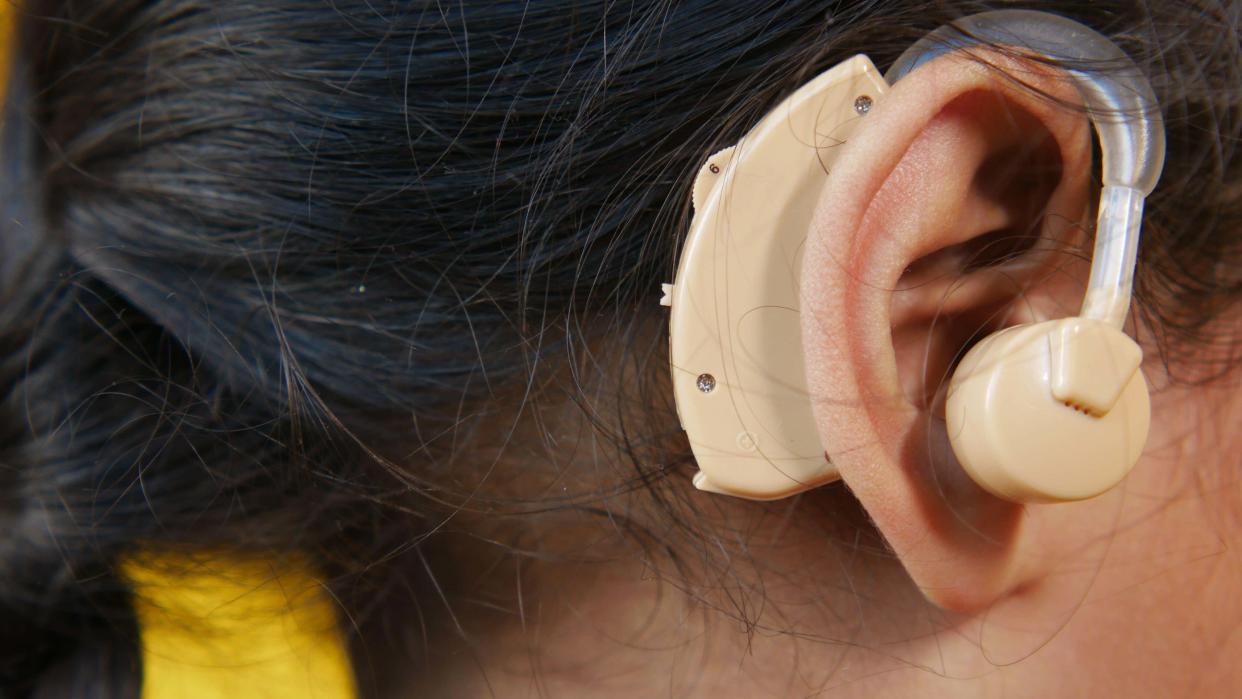Gene therapy helps restore hearing in children with hereditary deafness

Five children in China with with hereditary deafness have had their hearing restored after undergoing pioneering gene therapy.
The patients, aged between one and six, had a specific form of deafness called DFNB9, which is caused by mutations in a gene known as OTOF and is characterised by severe-to-complete hearing loss.
The researchers said five of the six children treated demonstrated hearing recovery and improvements in speech recognition within six months.
After the gene therapy, hearing was restored to a level that would be classed as a mild to moderate hearing loss, which would typically require a hearing aid.
The team said the findings, published in the journal The Lancet, has shown the treatment to be effective and most of the side effects were classed as low grade.
The researchers are now planning to expand the trial to a larger group and track their outcomes over a longer time period.
Study author Zheng-Yi Chen, an associate scientist at the Massachusetts Eye and Ear hospital in the US and associate professor of Otolaryngology – Head and Neck Surgery at Harvard Medical School, said: “If children are unable to hear, their brains can develop abnormally without intervention.
“The results from this study are truly remarkable.
“We saw the hearing ability of children improve dramatically week by week, as well as the regaining of their speech.”
DFNB9 is one of the most common forms of hereditary, or congenital deafness.
There are thought to be 20,000 people in Europe and the USA with the condition.
It is caused by a failure to produce a functioning protein known as otoferlin, which is necessary for the transmission of the sound signals from the ear to the brain.
Currently, cochlear implant is the only effective treatment that is recommended to DFNB9 patients with severe to profound deafness.
Prof Chen said: “Not since cochlear implants were invented 60 years ago, has there been an effective treatment for deafness.
“This is a huge milestone that symbolises a new era in the fight against all types of hearing loss.”
To deliver the treatment, the researchers used a modified version of the adeno-associated virus (AAV), which is not harmful to humans.
AAV was tweaked by the scientists so it could carry a version of the human OTOF gene.
Using a special surgical procedure, the AAV gene treatment was carefully injected into the inner ears of the patients.
The children’s hearing was assessed weekly, using a test known as the auditory brainstem response (ABR).
ABR picks up the electrical signal that originates from the auditory nerve and brainstem in response to a sound stimulus, such as a click.
The ABR threshold is the minimum level of sound – measured in decibels – needed to trigger an ABR.
Before the treatment, all six children had an ABR threshold of more than 95 decibels, indicating profound hearing loss.
After 26 weeks, five children demonstrated hearing recovery, showing a 40-57 decibel reduction in ABR thresholds, equating to mild or moderate hearing loss.
The researchers said most of the adverse events were low-grade, such as fever, loss of appetite and constipation.
Yilai Shu, of the Eye & ENT Hospital at Fudan University, said: “We are the first to initiate the clinical trial of OTOF gene therapy.
“It is thrilling that our team translated the work from basic research in animal model of DFNB9 to hearing restoration in children with DFNB9.
“I am truly excited about our future work on other forms of genetic hearing loss to bring treatments to more patients.”
Commenting on the findings, Ralph Holme, director of research at RNID, said: “At RNID we want there to be a range of treatments to prevent hearing loss and restore hearing for those who need and want them.
“The initial results of this gene therapy trial are very encouraging with five of the six children treated showing improvements in their hearing.
“This study feels like we are at the dawn of a new era.
“Larger studies are needed to confirm these initial findings, but it gives real hope to families with this particular type of genetic deafness that effective treatments to restore hearing will be found.”

 Yahoo News
Yahoo News 
